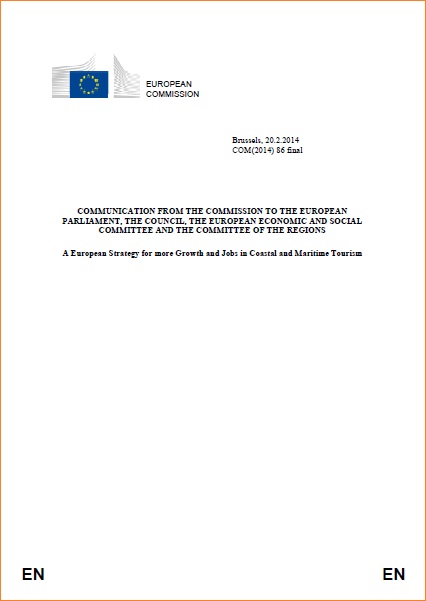Displaying items by tag: Economy
European Commission Summer 2020 Economic Forecast
According to the Commission’s latest economic forecast, published in early July, the EU economy will experience a deep recession in 2020 due to the impact of COVID-19. This forecast updates the spring forecast published in early May. As lockdown are being lifted more gradually than originally anticipated, the impact on economic activity in 2020 will be more significant than projected in the earlier forecast. The return to growth in 2021 will also be less strong than projected in the spring.
Below are the key figures from the summer economic forecast
- The Euro area economy will contract by 8.7% in 2020 and grow by 6.1% in 2021
- The EU economy is forecast to contract by 8.3% in 2020 and grow by 5.8% in 2021
The full forecast and reports can be found here.
European Commission Spring Economic Forecast
The European Commission published its Spring economic forecast on 6 May, the first one to fully consider the impact of COVID-19. It provides a forecast at European level, for EU countries, candidate countries and certain other non-EU countries. It concludes that the impact of COVID-19 will affect all countries, even if at different levels. The same is the case for the speed of the recovery expected in 2021. Below the key indicators for the EU and Euro area.
- The Euro area economy will contract by 7.75% in 2020 and grow by 6,25% in 2021. The EU economy is forecast to contract by 7.5% in 2020 and grow by around 6% in 2021.
- The unemployment rate in the Euro area will rise from 7.5% in 2019 to 9.5% in 2020 before reducing to 8.5% in 2021. In the EU, it will rise from 6.7% in 2019 to 9% in 2020 and then reduce to around 8% in 2021.
- Inflation in the Euro area (measured by the Harmonised Index of Consumer Prices), is forecast at 0.2% in 2020 and 1.1% in 2021. For the EU, inflation is forecast at 0.6% in 2020 and 1.3% in 2021.
The forecast is based on a set of assumptions about the evolution of the coronavirus pandemic and containment measures. It assumes that restrictions will be gradually lifted from May. The full forecast and country-specific information can be found here.
European Commission Winter Economic Forecast predicts moderate growth
The Winter 2020 Economic Forecast published on 13 February projects that the European economy is set to continue a path of steady, moderate growth. It concludes that the Euro area gross domestic product (GDP) growth will remain stable at 1.2% in 2020 and 2021. For the EU as a whole, growth is forecast to reduce slightly to 1.4% in 2020 and 2021, down from 1.5% in 2019.
The full forecast, including country-by-country reports and assessments of the potential economic risks can be found here.
The 2018 annual economic report on EU Blue Economy
 Prepared by the Directorate-General for Maritime Affairs and Fisheries (European Commission) jointly with the Joint Research Centre, in April 2018
Prepared by the Directorate-General for Maritime Affairs and Fisheries (European Commission) jointly with the Joint Research Centre, in April 2018
This first Annual Economic Report of the EU Blue Economy intends to measure the trends, performance and progress of the Blue Economy in Europe.
It looks into the established maritime sectors (living resources; marine extraction and oil & gas; ports, warehousing and water projects; shipbuilding & repair; coastal tourism) but also at some emerging innovative sectors (marine renewable energy; blue bioeconomy; desalination; deep-seabed mining; coastal and environmental protection).
Study on the competitiveness of the recreational boating sector
 Prepared for the European Commission, in November 2016
Prepared for the European Commission, in November 2016
After the Communication from the European Commission, A European Strategy for more Growth and Jobs in Coastal and Maritime Tourism, that underlined the importance of coastal and maritime tourism, especially for employment for the whole economy, the Directorate General Entreprise and Industry ordered this study to assess the overall competitiveness of the recreational boating sector.
The study identifies the main factors influencing the competitive performance of the EU recreational boating industry and provides policy recommendations on how the competitiveness of this sector in Europe could be improved. Several aspects are researched:
- Analysis of the demand for recreational boating in Europe
- Analysis of the boat manufacturing sector
- Analysis of the services sector
- Scenarios and recommendations to improve the EU’s growth and employment strategy
A European Strategy for more Growth and Jobs in Coastal and Maritime Tourism - Communication from the Commission
 Communication published in February 2014
Communication published in February 2014
Following the Commission's 2010 Communication announcing a strategy for sustainable coastaland maritime tourism, this Communication from 2014 proposes joint responses to the multiple challenges, with a view to capitalise on Europe's strengths and enabling it to substantially contribute to the Europe 2020 objectives for smart, sustainable and inclusive growth.
Assessment of the Impact of Business Development Improvements around Nautical Tourism
 Prepared for the European Commission, in November 2016
Prepared for the European Commission, in November 2016
The objective of this study was to provide the European Commission with evidence to inform decisions about the development of EU policy on issues relevant to nautical tourism. The specific objectives were to, for a predefined set of nautical tourism topics:
- Explore and identify problems affecting the market performance;
- Identify policy options and an elaborated short list of options that address the causes of these problems; and
- Analyse the expected impacts of the short-list of policy options


